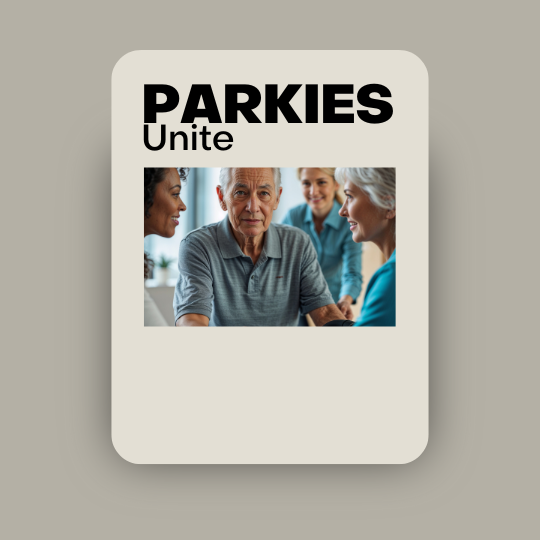Parkinson’s Disease: Target and Thrive

When we consider how therapy works – whether for mental health conditions or neurological illnesses like Parkinson’s – there has long been a debate between taking a broad, general approach versus focusing on the most disruptive or dominant symptoms first. This conversation we’ve had reveals that deliberately addressing the primary, most functionally impairing symptoms can offer quicker relief, boost motivation, and reduce downstream issues. Below is a step-by-step, comprehensive look at how this principle applies to Parkinson’s disease management and why deliberately targeting more dominant symptoms could improve therapy outcomes.
The Power of Focusing on Dominant Symptoms
Therapy frequently alternates between broad strategies (emphasizing insight, coping skills, or rapport-building) and more pinpointed methods. A dominant symptom is what most disrupts a person’s everyday functioning. For someone with Parkinson’s, this might be severe tremor, intense anxiety about movement, or hypophonia (soft speech). The reasoning behind focusing on these more urgent concerns includes:
- Immediate Relevance: Tending directly to the symptom that causes the greatest distress often yields faster relief and stronger engagement.
- Interruption of Problem Cycles: Many symptoms in mental or neurological conditions create feedback loops that worsen secondary problems. Halting the cycle at its most significant source can reduce the ripple effect.
- Efficiency and Precision: By zeroing in on the most problematic issue, therapy conserves resources and uses time more effectively. Clients are less likely to feel overwhelmed by a scattershot approach.
- Evidence-Based Backing: Targeting hallmark symptoms aligns with how many empirical therapies evolved, from Cognitive Behavioral Therapy (CBT) for anxiety and depression, to specialized interventions like Dialectical Behavior Therapy for borderline personality disorder.
- Therapeutic Alliance Balance: While a strong therapist-client bond underpins effective care, focusing on a distressing symptom can often strengthen rapport. Clients see practical results and feel more hopeful.
Customized Intervention for Parkinson’s
Parkinson’s disease is a complex movement disorder affecting motor and nonmotor domains. Motor symptoms can include tremor, bradykinesia (slowness), rigidity, and postural instability, while nonmotor symptoms might include depression, anxiety, sleep disturbances, or cognitive decline. A customized intervention approach identifies and prioritizes the symptom(s) that most limit independence and quality of life.
1. Identify the Most Disruptive Symptom
Whether it is a pronounced tremor affecting daily tasks, severe anxiety about falling, or an unshakable low mood, pinpointing that single most challenging symptom is the first step. Neurologists, physical therapists, occupational therapists, speech-language therapists, and mental health professionals may collaborate to decide where to focus initial treatment.
2. Tailor the Modality
- Physical Therapy and Exercise: If impaired gait or balance is a person’s chief complaint, specific exercises (LSVT BIG, dance classes, or treadmill therapy) can be adapted to improve mobility.
- Speech-Language Therapy: Where soft speech or swallowing difficulty stands out, speech therapists might employ techniques such as LSVT LOUD, focusing on vocal intensity and clarity.
- Occupational Therapy: Tremor or rigid fine motor skills can be alleviated by learning adaptive techniques for dressing, cooking, or writing.
- Mental Health Interventions: Nonmotor symptoms like depression or anxiety respond well to targeted psychotherapies. For instance, CBT can help manage catastrophic thinking around movement difficulties.
3. Engage Multi-Disciplinary Care
Parkinson’s management often involves adjusting medications (like levodopa or adjunct therapies) in tandem with specific rehabilitation strategies. Optimizing medication schedules to decrease “off” periods can make it easier to participate in tailored interventions.
4. Leverage Early Wins
By concentrating on the most debilitating issue, improvements often manifest sooner. Regaining the ability to speak up in social situations or walking more confidently without a walker can uplift motivation and a sense of control, encouraging individuals to persist in other therapies.
5. Expand the Focus Gradually
Once the primary symptom is addressed, therapy can broaden to tackle secondary motor or nonmotor concerns. The sense of momentum fuels continued engagement: if a tremor has settled enough to make self-care tasks easier, the next stage might be fine-tuning balance work or coping skills for mild cognitive changes.
6. Schedule Regular Reassessments
Parkinson’s symptoms evolve over time, and a customized intervention plan should remain flexible. What was once most problematic (like tremor) may give way to new priorities (like dyskinesia or more pronounced fatigue). Periodic reviews ensure the therapeutic strategy stays aligned with the patient’s current reality.
Why This Matters
Parkinson’s disease is not just about motor disruptions; it has profound emotional, social, and mental health effects. Targeting the symptom that most diminishes daily life – whether it’s a hallmark motor difficulty or a debilitating mood problem – aligns with fundamental principles of effective psychotherapy. This precision fosters quicker improvement, preserves energy and resources, and provides a sturdy foundation for addressing broader issues down the line.
In the end, a customized approach does not neglect the whole person; rather, it ensures that therapy tackles the biggest barriers to well-being in a prioritized, actionable way.
Parkinson’s disease, therapy, mental health, motor symptoms, allied care
AI-generated medical content is not a substitute for professional medical advice or diagnosis; I hope you found this blog post informative and interesting. www.parkiesunite.com by Parkie
Leonardo Prompt:
“A photo-realistic image capturing a middle-aged individual with Parkinson’s disease in a bright, supportive therapy setting, focusing intently on addressing their most disruptive motor symptom through guided movement exercises, with confident facial expressions and encouraging professionals nearby.”
ParkinsonEmpowerNow! DominantSymptomFocus CustomIntervention1A
negative prompt
“Malformed limbs, extra limbs, mutated hands, disfigured face, bad anatomy, malformed hands, Text, lettering, captions, generating images with text overlays”